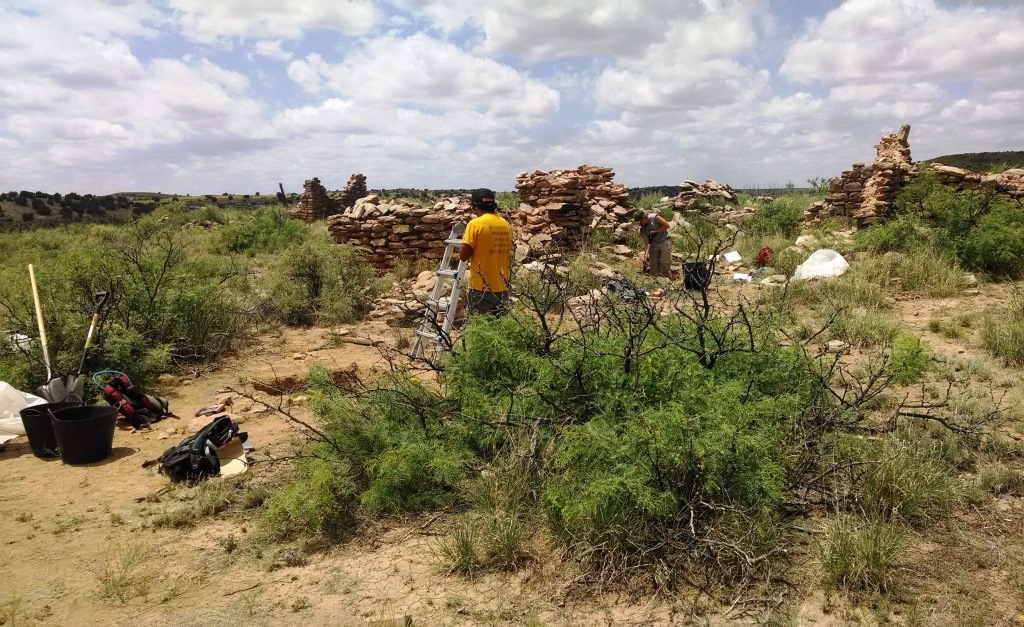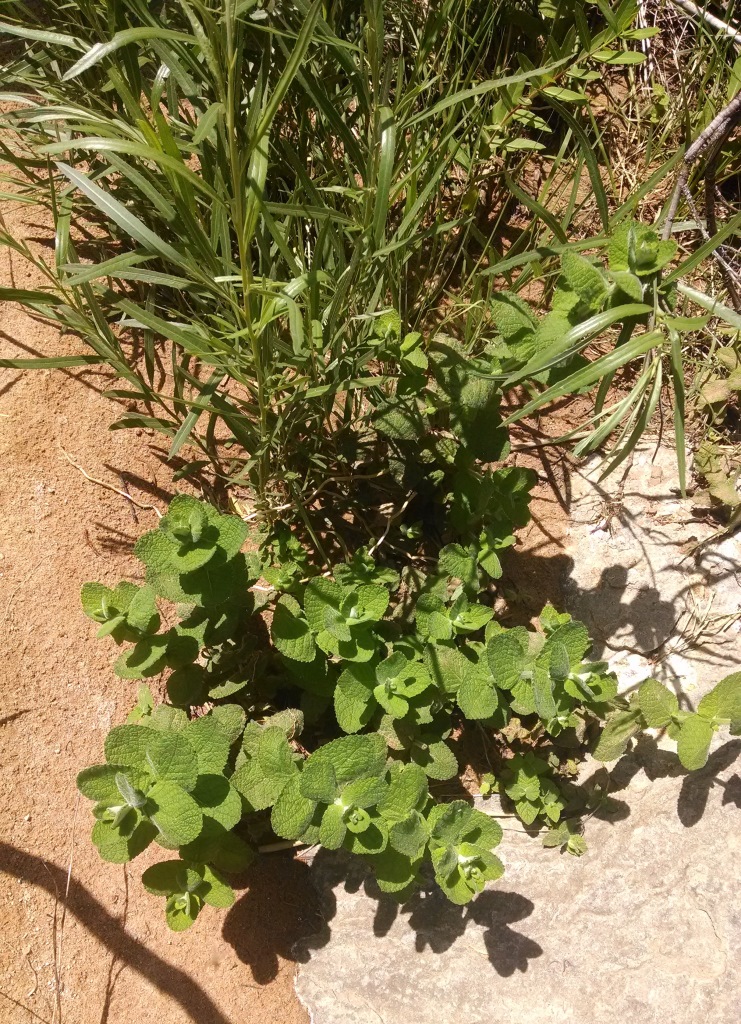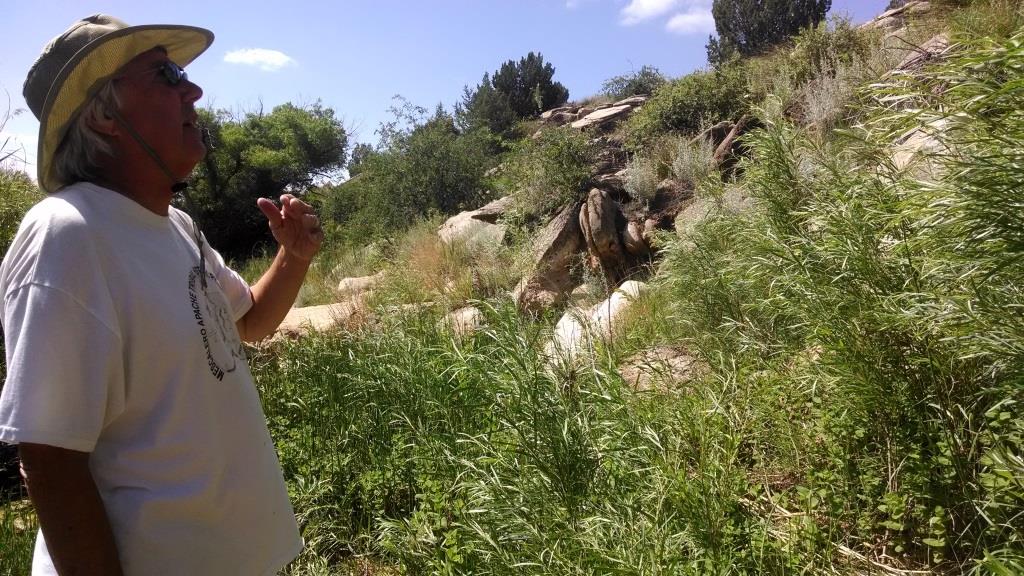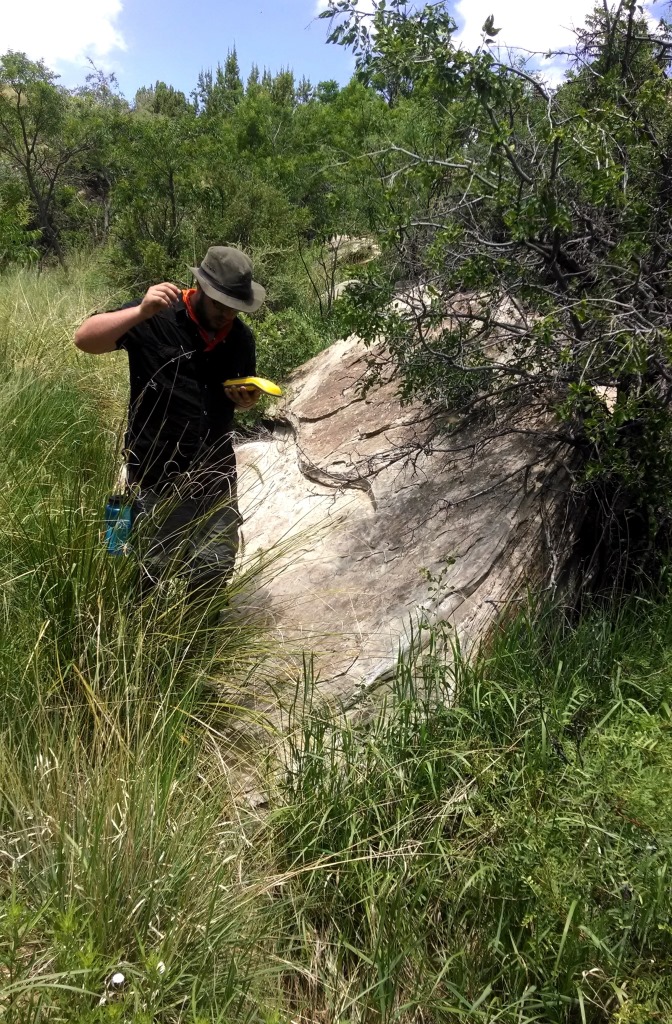Archaeology at Los Ojitos
The rural community of Los Ojitos in Guadalupe County, New Mexico was settled in the late 1860s by a few families who filed homestead claims on public land just north of the Bosque Redondo Indian Reservation. The availability of land along the Pecos River appealed especially to Hispanic farmers and ranchers, some of whom looked south for new territory as a wave of American immigrants pushed into what is sometimes called the “Hispano homeland” in northern New Mexico. The site’s proximity to Fort Sumner/Bosque Redondo was also a factor; the first homestead claim in the area was made by a former soldier, John Gerhardt, and the fort purchased local meat and produce until the reservation was abandoned in 1868.
The Hispanic families who settled Los Ojitos were part of the first generation of Hispanic homesteaders in New Mexico. Many of these founding families came from Spanish- and Mexican-era land grant communities where grantees shared the rights to common lands and the responsibility to build and maintain irrigation ditches and other public structures (see San Miguel del Vado). In contrast to the Spanish community land grants, the American homestead acts provided a mechanism for granting plots of land to individual families. The original version of the act in 1862 provided individual applicants with uniform, 160-acre parcels of land (some with access to water, many without) on which they were expected to establish self-sufficient family farms. In order to receive title to these lands, applicants were required to build a residence, improve the land for agriculture, and remain on the claim for at least five years.
Los Ojitos grew from a handful of homesteading families in 1870 to dozens between 1880 and 1910. Most of these families owned sheep or cattle or else managed livestock for other, wealthier families in the area. The heart of the community was a stretch of small springs (“ojitos”) that emptied into the Pecos River, providing clean, sweet water for the residents, their animals, and the subsistence gardens they maintained. On occasion the community was served by a small general store or a rural, one-room public school, but for most services (including church services), community members traveled by horse, wagon, or (in later decades) automobile to the larger towns of Puerto de Luna, Santa Rosa, or Fort Sumner.
New Mexico was finally admitted to the Union as a state in 1912, five years before the U.S. entered World War I and seven years before veterans returning from that conflict introduced the Spanish flu to the region. War, disease, and economic depression hurt the community during the early twentieth century, and many of those who remained in the late 1930s were forced out by the construction of a large reservoir downstream. By the mid-twentieth century, the site was abandoned.
The primary goal of fieldwork at Los Ojitos was to explore the impact of changing land tenure rules on these first-generation Hispanic homesteaders by looking at how their settlement and land-use practices shifted (or didn’t) from traditional strategies employed on Spanish land grants. Fieldwork at Los Ojitos included detailed documentation of architectural features, limited survey and surface collection, documentation of rock art, and excavation of test units in and around residential features included within the original Valdez and Ronquillo land claims. Most of the artifacts recovered from domestic contexts dated to the peak occupation of that community (1880–1910), with smaller numbers dating to the continuing occupation of the settlement between 1910 and 1950.
Products
M.A. Theses
- “Aguaculture”: Hispano Water Management along the Rio Pecos, by Tara del Fierro Duran. (2018)
- Historic Micaceous Ceramics and Cuisine at Los Ojitos, New Mexico, by Shannon Cowell. (2018)
Publications
- Beloved Things: Interpreting Curated Pottery in Diasporic Contexts, by Shannon Cowell and Kelly Jenks. International Journal of Historical Archaeology. (2020)
- Prehistoric Rock Art and Historic “Graffiti,” by Kelly Jenks. In Scholar of the City Different: Papers in Honor of Cordelia Thomas Snow, edited by Emily J. Brown, Matthew J. Barbour, and Genevieve N. Head, pp. 109–122. Papers of the Archaeological Society of New Mexico No. 45. Archaeological Society of New Mexico, Santa Fe. (2019)
- Demographic Change at Los Ojitos, a Late 19th and Early 20th Century Homestead Community on the Pecos River, Guadalupe County, New Mexico, by Jeffery R. Hanson and Kelly L. Jenks. In Reflections of the Past and Recent Discoveries: Proceedings of the 3rd and 4th Tularosa Basin Conferences, edited by David H. Greenwald and Nancy J. Hewitt, pp. 169–190. Tularosa Basin Conference Series No. 3. Jornada Research Publications No. 4. Jornada Research Institute, Tularosa, NM.
- Becoming Vecinos: Civic Identities in Late Colonial New Mexico, by Kelly Jenks. In New Mexico and the Pimería Alta: The Colonial Period in the American Southwest, edited by John G. Douglass and William M. Graves, pp. 213–238. University of Colorado Press, Boulder. (2017)
Conference/Community Presentations
- Beloved Things: Micaceous Beanpots and Connections to the Hispanic New Mexican Homeland. Public (virtual) talk by Shannon Cowell and Kelly Jenks. Part of the Archaeology Cafe Series, hosted by Archaeology Southwest.
- Exploring Gender, Trade, and Heirloom Micaceous Ceramics at Los Ojitos, New Mexico, by Shannon Cowell. Paper presented at the 84th Annual Meeting of the Society for American Archaeology, Washington D.C. (2019)
- Refining Micaceous Ceramic Typologies at Los Ojitos, NM, by Shannon Cowell. Paper presented at the 83rd Annual Meeting of the Society for American Archaeology, Washington D.C. (2018)
- Prehistoric Rock Art and Historic "Graffiti": Petroglyphs at a Multicomponent Site in Eastern New Mexico, by Kelly Jenks. Paper presented at the 82nd annual conference of the Society for American Archaeology, Vancouver, British Columbia, Canada. (2017)
- A New Kind of Frontier: Hispanic Homesteaders in Eastern New Mexico, by Kelly Jenks. Paper presented at the 50th annual conference of the Society for Historical Archaeology, Fort Worth, Texas. (2017)
- Aquaculture: Hispano Water Management along the Rio Pecos, by Tara del Fierro Duran. Poster presented at the 77th annual conference of the Society for Applied Anthropology, Santa Fe, New Mexico. (2017)
- Demographic Change at Los Ojitos, a Late 19th and early 20th Century Homestead Community on the Pecos River, Guadalupe County, by Jeffery R. Hanson and Kelly Jenks. Paper presented at the Tularosa Basin Conference. Tularosa, New Mexico. (2016)
- A Tale of Two Villages: Considering Land Tenure in the Spanish and American Periods, by Kelly Jenks. Paper presented at the 79th annual conference of the Society for American Archaeology, Austin, Texas. (2014)
Technical Report
-
Final Report of Archaeological Fieldwork and Documentation at Los Ojitos (LA 98907), Guadalupe County, New Mexico, by Kelly Jenks, Evan Giomi, Jed Smith, Melinda Goodson, Riley Burchell, and Alaina Miller. NMCRIS No. 138136. Submitted to the Bureau of Reclamation, Upper Colorado Region, Albuquerque Area Office. (2017)
Additional Resources
External Websites
|
Field crew on site |
Excavation team (Cheyenne and Madison) |
Cool basal stones |
|
Building documentation (Jed) |
More building documentation (Jed again) |
Sealed doorway |
|
Mint growing along the old acequia |
Dr. Hanson pontificating |
Jake mapping the acequia |









